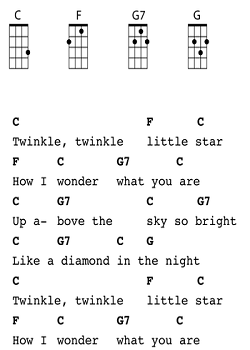

The popularity of the ensemble with visitors launched a fad for Hawaiian-themed songs among Tin Pan Alley songwriters. Awai and his Royal Hawaiian Quartet, along with ukulele maker and player Jonah Kumalae. The Hawaiian Pavilion featured a guitar and ukulele ensemble, George E.

The ukulele was popularized for a stateside audience during the Panama–Pacific International Exposition, held from spring to autumn of 1915 in San Francisco. Glackens satirizing the contemporary ukulele craze, employing several stereotypes Pre-World War II Today, Japan is considered a second home for Hawaiian musicians and ukulele virtuosos. In 1959, Haida founded the Nihon Ukulele Association. During World War II, authorities banned most Western music, but fans and players kept it alive in secret, and it resumed popularity after the war. Haida and his brother Katsuhiko formed the Moana Glee Club, enjoying rapid success in an environment of growing enthusiasm for Western popular music, particularly Hawaiian and jazz. The ukulele arrived in Japan in 1929 after Hawaiian-born Yukihiko Haida returned to the country upon his father's death, and introduced the instrument. "Ukulele in the Classroom", a revised program created by James Hill and Doane in 2008 is a staple of music education in Canada. 50,000 schoolchildren and adults learned ukulele through the Doane program at its peak. Chalmers Doane dramatically changed school music programs across Canada, using the ukulele as an inexpensive and practical teaching instrument to foster musical literacy in the classroom. A patron of the arts, he incorporated it into performances at royal gatherings. One of the most important factors in establishing the ukulele in Hawaiian music and culture was the ardent support and promotion of the instrument by King Kalākaua. Two weeks after they disembarked from the SS Ravenscrag in late August 1879, the Hawaiian Gazette reported that "Madeira Islanders recently arrived here, have been delighting the people with nightly street concerts." Three immigrants in particular, Madeiran cabinet makers Manuel Nunes, José do Espírito Santo, and Augusto Dias, are generally credited as the first ukulele makers. ĭeveloped in the 1880s, the ukulele is based on several small, guitar-like instruments of Portuguese origin, the machete, cavaquinho, timple, and rajão, introduced to the Hawaiian Islands by Portuguese immigrants from Madeira, the Azores and Cape Verde. The catalog describes two ukuleles from Hawaii - one that is similar in size to a modern soprano ukulele, and one that is similar to a tenor (see § Types and sizes). One of the earliest appearances of the word ukulele in print (in the sense of a stringed instrument) is in the Metropolitan Museum of Art's Catalogue of the Crosby Brown Collection of Musical Instruments of All Nations published in 1907. Legend attributes it to the nickname of Englishman Edward William Purvis, one of King Kalākaua's officers, because of his small size, fidgety manner, and playing expertise.
UKULELE KIDS SONG HOW TO
Listen to Michael Jackson on ABC Radios Ask the Experts discussing ukuleles, how to buy a good ukulele and some useful hints about ukulele playing.The ukulele is commonly associated with music from Hawaii, where its name roughly translates as "jumping flea", perhaps because of the movement of the player's fingers. Helpful Hints for Beginner Ukulele Players.

Learn to play ukulele online now with Mikes Instant Play Ukulele Method! Orders can also be taken on this website. Uke n Play Ukulele for Kids can be found in most Australian music stores (published Music Sales) and is distributed in the United States/Canada by Mel Bay Publications and in the United Kingdom by Music Sales.

With only 3 simple chords to master, 25 fun songs can be played in no time at all! The downloadable audio tracks help give the child confidence while they learn the song, feel the beat and refine their playing technique. A music program for the young child (5-10yrs) at home or at school!īased on his best-selling Uke n Play Ukulele, Mike Jackson has now designed a program for young children to learn to play the ukulele with just a little help from an older person.


 0 kommentar(er)
0 kommentar(er)
